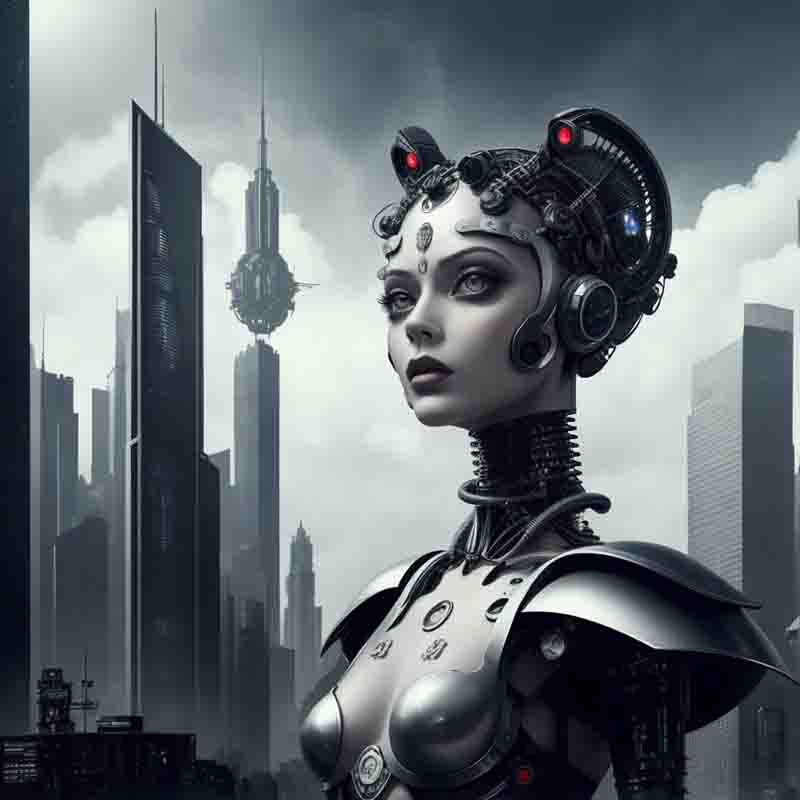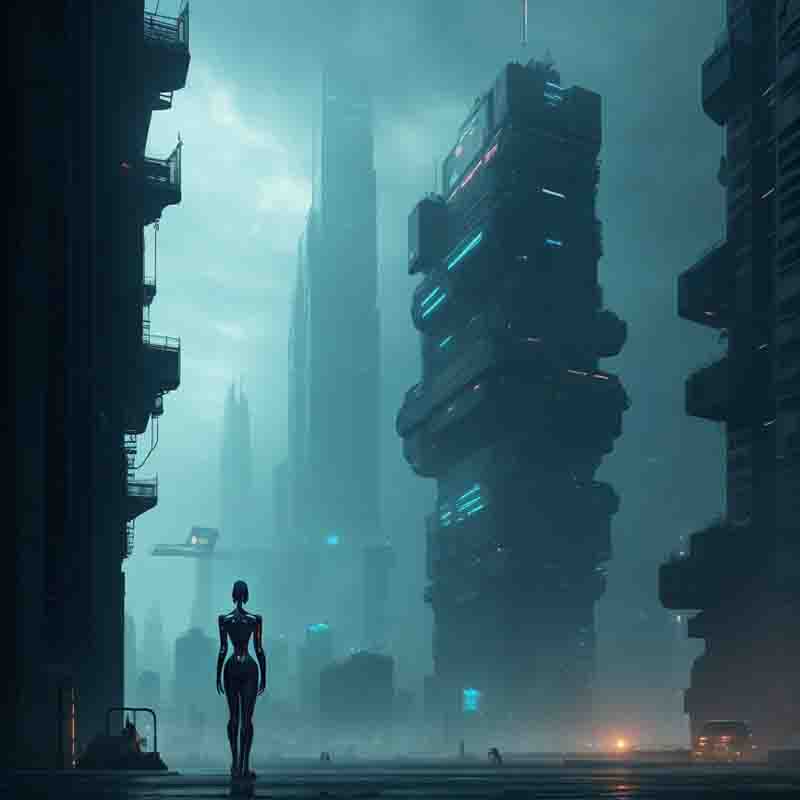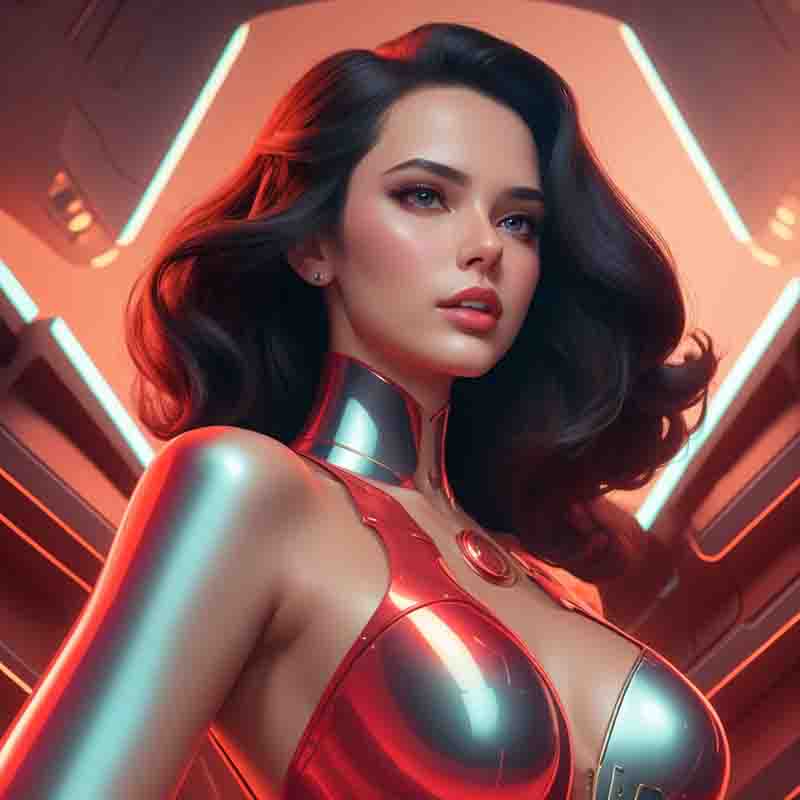Power and Potential of Creative Artificial Intelligence
Creative AI encompasses a wide range of applications, including art generation, music composition, storytelling, and even the development of new design concepts.

Artificial intelligence (AI) is rapidly transforming the world, and the creative industries are no exception.

Artificial intelligence (AI) can be used to generate new ideas for art, design, and other creative projects.

AI can be used to create new product designs that are both functional and aesthetically pleasing.
Navigating the Creative AI Era
By using algorithms and drawing from existing data, creative AI systems can produce novel and unique results, shifting the bounds of what is considered traditional human creativity.
Advanced machine learning techniques are used to simulate, complement, and even surpass human capabilities in the creation of artistic and imaginative content.
In practical terms, creative AI encompasses a wide spectrum of applications.
It can include the creation of authored content, fiction, storytelling, narratives and AI generated lyrics for virtual players and performers.
Creative AI has already made its breakthrough in the field of digital art.
Contemporary art and the growing interest of an open-minded art and collecting audience have triggered a rapid global response to the possibilities of combining creative AI art with a human touch.
By analyzing patterns, styles and structures present in various human-created content, AI systems can create new compositions that do justice to the nuances of human ingenuity.
Creative AI is not confined to textual creativity alone; it extends to the synthesis of audio and visual elements.
AI-powered systems can compose music, create visual art, or produce multimedia content by understanding and reflecting the underlying aesthetics and patterns found in human-created creative content.
Creative AI refers to the application of artificial intelligence (AI) techniques to the creation, enrichment, imitation and production of art, music, writing and related artistic expressions. In this context, AI systems are designed not only to analyze existing data, but also to produce innovative and original results in a broad range of creative disciplines.
Artificial Intelligence (AI) Timeline
| Time Period | Music Genre | |
|---|---|---|
| 1943 | Logic Theorist: Warren McCulloch and Walter Pitts develop the first artificial neural network. | |
| 1950 | Turing Test: Alan Turing proposes the Turing Test as a measure of a machine's intelligence. | |
| 1951 | UNIVAC I: The UNIVAC I computer is used for the first time to process data for the U.S. Census. | |
| 1956 | Dartmouth Conference: The term "Artificial Intelligence" is coined at the Dartmouth Conference. | |
| 1959 | General Problem Solver (GPS): Allen Newell and Herbert A. Simon develop the GPS program. | |
| 1965 | ELIZA: Joseph Weizenbaum creates ELIZA, an early natural language processing computer program. | |
| 1969 | ARPANET: The precursor to the internet is established by the U.S. Department of Defense. | |
| 1970 | Shakey the Robot: The first mobile robot capable of reasoning about its surroundings is developed. | |
| 1980 | Expert Systems:** The development of expert systems, rule-based AI, becomes popular. | |
| 1987 | Backpropagation: The backpropagation algorithm for training neural networks is widely adopted. | |
| 1997 | Deep Blue: IBM's Deep Blue defeats Garry Kasparov, the world chess champion, in a chess match. | |
| 2000s | Machine Learning Boom: Machine learning becomes a focal point, driven by advancements in algorithms. | |
| 2011 | Watson: IBM's Watson wins Jeopardy!, showcasing the power of AI in natural language processing. | |
| 2012 | AlexNet: Deep learning gains prominence with the success of AlexNet in the ImageNet competition. | |
| 2014 | AlphaGo: Google's AlphaGo defeats a world champion Go player, demonstrating AI's strategic thinking. | |
| 2015 | DeepDream: Google introduces DeepDream, generating visually artistic images using neural networks. | |
| 2016 | GANs: Generative Adversarial Networks (GANs) are introduced, revolutionizing image generation. | |
| 2017 | AlphaGo Zero: A more advanced version, AlphaGo Zero, surpasses its predecessor without human data. | |
| 2018 | BERT: Google introduces BERT (Bidirectional Encoder Representations from Transformers) for NLP. | |
| 2019 | GPT-2: OpenAI releases GPT-2, a highly advanced language model capable of generating coherent text. | |
| 2020s | AI in Everyday Life: AI becomes deeply integrated into daily life, from voice assistants to chatbots. | |
| 2021 | GPT-3: OpenAI releases GPT-3, one of the largest and most powerful language models to date. | |
| 2022 | AI Governance: Efforts intensify to establish ethical guidelines and regulations for AI applications. | |
| 2023 | Generative AI emerged as a transformative force, enabling the creation of realistic and diverse content, from images and videos to music and code. | |
| Future | Looking ahead to 2024 and beyond, AI is expected to continue disrupting industries and shaping society in profound ways. |
This timeline captures key milestones in the history of AI, highlighting its evolution from theoretical concepts to practical applications.
Future Forward: Embracing Creative AI
In recent years, the integration of Artificial Intelligence (AI) into creative professions has sparked a transformative wave, revolutionizing the way we approach design, art, and innovation.
AI's ability to analyze vast datasets, learn patterns, and generate novel content has found application in a multitude of creative fields, enhancing efficiency, inspiring innovation, and challenging traditional paradigms.
The turning point for Creative AI came in 2010 with the resurgence of interest in deep learning.
This approach, inspired by the structure and function of the human brain, allowed machines to process and understand data in ways previously unattainable.
In 2014, generative models took center stage, with Generative Adversarial Networks (GANs) becoming a focal point.
The following year, Google's DeepDream introduced the world to AI-generated artistic images, showcasing the technology's ability to interpret and transform visual data.
Creative AI in Natural Language Processing (NLP)
The year 2016 witnessed a significant stride in the application of Creative AI to Natural Language Processing (NLP).
Chatbots and language models, powered by sophisticated algorithms, demonstrated an unprecedented ability to understand and generate human-like language.
In 2018, OpenAI unveiled GPT-2, a language model with an impressive capacity for contextual comprehension and creative text generation.
Creative AI in Visual Arts
Visual arts have not been immune to the transformative influence of Creative AI.
In 2019, AI-generated art gained notable prominence, exemplified by works like "Edmond de Belamy."
These creations, generated by algorithms that learned from vast datasets of human art, challenge traditional notions of artistic authorship.
Beyond static images, Creative AI has found applications in visual content creation, graphic design, and even the synthesis of entire scenes and landscapes.
The Role of Generative Models
Generative models, the backbone of Creative AI, play a pivotal role in generating diverse and original content.
These models, including GANs, VAEs, and autoregressive models, learn from vast datasets to create new instances that share similarities with the learned data.
Whether applied to text, images, music, or videos, generative models form the basis for pushing the boundaries of what machines can autonomously produce in the creative domain.
AI in Creative Professions
Artificial intelligence (AI) is transforming the creative professions industry on a large scale, creating new tools and techniques that are fundamentally changing the way artists, designers and writers work.
Although some claim that AI is displacing human creativity, in practice it is more likely that it is enriching it and opening up new avenues for artistic development and innovation.
From AI-generated paintings and musical compositions to innovative applications in storytelling and design, the following key points illustrate the diverse creative outcomes that can be achieved when algorithms and imagination come together.
-
Creative Algorithms: In the context of creative AI, these algorithms are employed to capture and mimic the essence of human creativity. They learn from existing creative works, identifying patterns and styles, and use this knowledge to generate new and unique content.
-
Algorithmic Art: AI-driven algorithmic art often explores new forms, styles, and patterns that may not be immediately apparent to human artists. Generative models and creative algorithms contribute to the creation of algorithmic art by learning from diverse datasets and producing visually or auditorily striking compositions.
-
Textual Creativity: AI systems capable of textual creativity analyze vast datasets of human-generated text, learning patterns, styles, and linguistic nuances. This learning process enables machines to produce text that exhibits creativity, capturing the subtleties of language use and storytelling.
-
Computational Imagination: Creative algorithms that incorporate computational imagination learn to explore diverse possibilities, extrapolating from existing information to create something entirely new. This concept challenges traditional views of creativity and highlights the potential for AI systems to contribute to the generation of ideas and concepts that push the boundaries of human imagination.
-
Language Innovation: Language innovation in the context of creative AI involves the exploration and development of new forms of expression and communication facilitated by artificial intelligence. AI systems can contribute to language innovation by generating content that challenges traditional linguistic norms, introduces novel idioms, or explores unconventional ways of conveying ideas.
-
Synthetic Expression: In the context of creative AI, synthetic expression is evident in the outputs generated by algorithms, machine learning models, and neural networks. These systems learn from existing examples but produce content that is not a direct replication, introducing a novel and synthetic dimension to creative expression.
-
AI Music Composition: Creative algorithms in AI music composition learn from diverse musical genres, styles, and compositions, enabling machines to generate music that reflects human-like creativity. The collaboration between AI and musicians also opens up new possibilities for exploring unconventional musical styles and pushing the boundaries of what is considered traditional in the realm of music composition.
-
AI Video Synthesis: The application of AI in video synthesis extends to fields such as filmmaking, animation, and virtual reality, where algorithms contribute to the creation of visually compelling and contextually relevant content. As AI systems learn from vast datasets of visual information, they gain the capacity to synthesize videos that not only mimic human creativity but also introduce novel perspectives and visual storytelling techniques.
As AI technology evolves, we can anticipate even more cutting-edge and innovative tools and applications to further elevate the creative process. AI is by no means designed to replace human creativity, rather to complement it and provide new avenues for artistic expression and renewal.
AI: The Next Frontier of Creativity
Creative AI stands as a testament to the symbiosis between human ingenuity and machine capabilities.
From its historical roots to present-day applications, the journey of Creative AI illustrates its transformative potential across diverse domains.
As technology continues to advance, Creative AI will undoubtedly play an increasingly integral role in shaping the creative landscape of the future.
Creative Artificial Intelligence (AI): FAQ
Are you curious about music, art, technology, fashion, lifestyle, travel and beer?
If so, then you need to subscribe to the free Likewolf newsletter.
100% privacy. When you sign up, we'll keep you posted.
Digital Money
Sharpen your Crypto IQ
